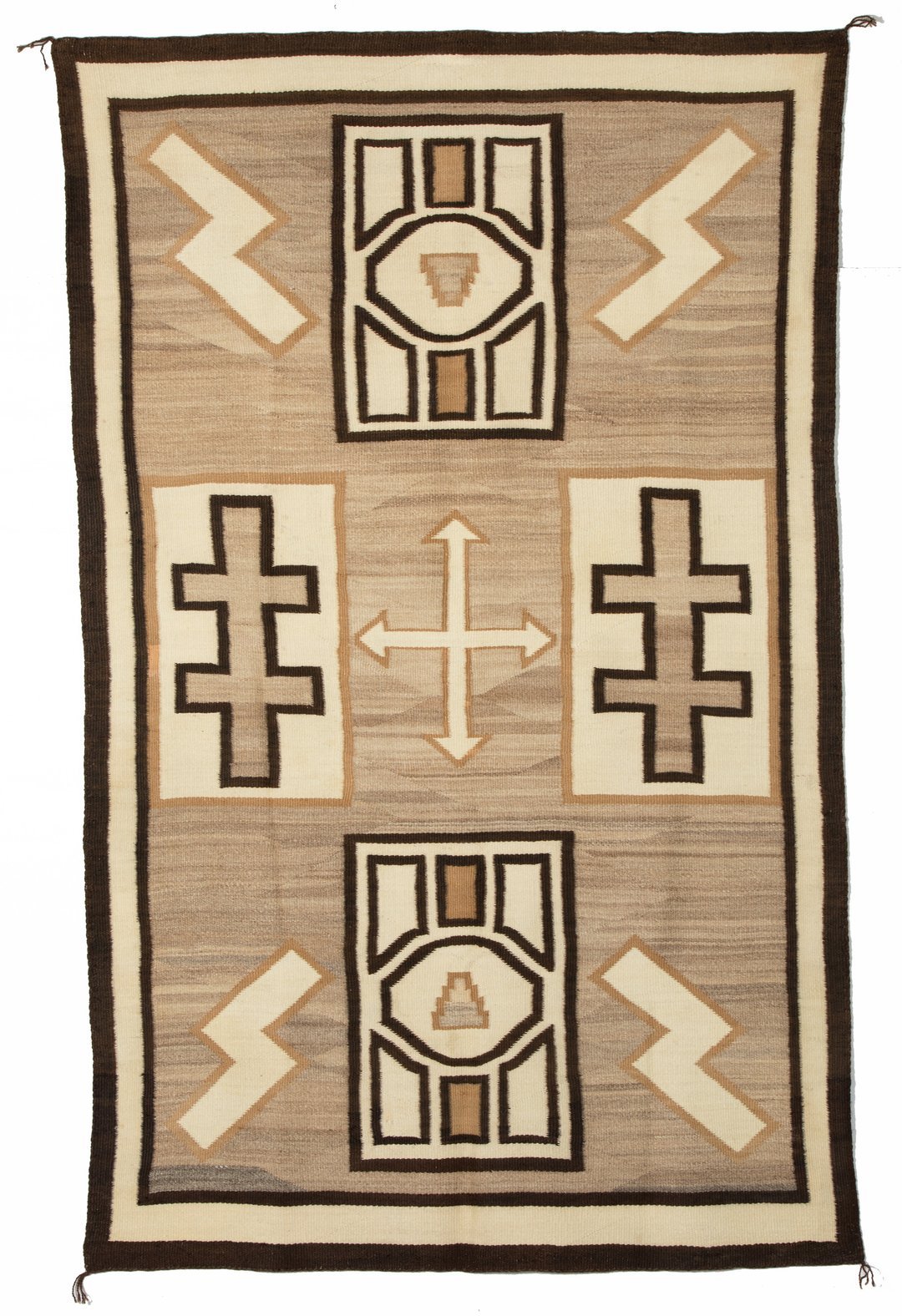All Things Navajo
"Historic and contemporary primitive art"
Navajo weavings began in the early 1700's through the 1850's.
The Navajo migrated to the southwest from Canada in the 15th century. Navajo women learned weaving in the 1600's from the Pueblo Indian neighbors who had been growing cotton since 800 AD. Spanish settlers brought their Churro sheep to the region in the early 1600's and introduced the Navajo to wool, this was known as the classic period. By the 1800s Navajo weavers used wool exclusively and became well known for their finely woven blankets that became trade items. Collected for more than two hundred years, the first collectors were other Indians. These blankets were considered "status symbols."
According to one aspect of this tradition a spiritual being "Spider Woman" instructed the women of the Navajo how to build the first loom from sky, earth, sun and lightening and taught them to weave on it. Because of this belief traditionally there will be a opening somewhere within the pattern to prevent the weaver from becoming lost in Spider Woman's pattern and to release the soul of the rug.
Navajo transitioned though six periods between 1850s and 1940s due to changes in lifestyle, trade, war and the transition from blankets to rug weaving. The Navajo weavings include: German Town, Eye Dazzlers, Two Gray Hills and Pictorials. All are original and one-of-a-kind works
Germantown Navajo rugs are made with aniline dyes and synthetic yarns from Germantown, PA.
resulting in bright reds, oranges and navy.
Storm Cloud style Navajo Rug representative
of the four winds, clouds and lightning.
Two gray hills is known for weavings in which no dyes are used. The natural colors are spun into yarns ranging from creamy whites, tans, browns and grays. The smaller ply of the yarn resulted in fine dense and tightly woven rugs, often called tapestry rugs.
Some motifs in Navajos were derived from oriental rugs including:
latch hooks, water bug shaped like an X and rosettes
Eye Dazzler rugs offer weavers the chance to express their artistry, freedom and ceremonial musings.
They infuse the "spirit" into their designs.
Photo via Shiprock Santa Fe
More southwest inspiration from Shiprock HERE
Pictorial navajos tell stories with landscape designs, celebrations and ceremonies. "Painting with wool."
Yei (above) is one type of pictorial Navajo which are highly stylized figures with elongated bodies.
Yei pattern rugs feature images of the holy people drawn from ceremonial paintings.
Rugs portray Yeis in ceremonies. The most common types feature multiple figures
On everything Navajo check out these books:
"The Navajo Weaving Tradition"
"One Hundred Years of Navajo Rugs"
"A Guide to Navajo Rugs"



















